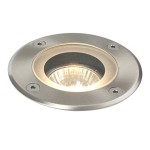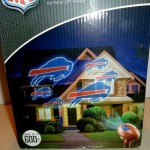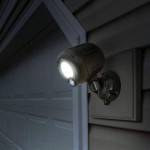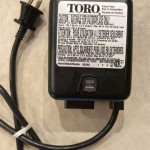How To Get Rid Of Musty Smell In Outdoor Cushions
Outdoor cushions enhance the comfort and aesthetic appeal of patios, decks, and porches. However, exposure to the elements can lead to a musty odor, diminishing their appeal. This article provides comprehensive methods for eliminating these unpleasant smells and restoring freshness to outdoor cushions.
Understanding the Cause of Musty Odors
Musty odors typically originate from mildew and mold growth. These fungi thrive in damp, dark environments, making outdoor cushions susceptible, particularly those stored improperly during the off-season or exposed to frequent rain. The porous nature of cushion fillings, often foam or polyester fibers, readily absorbs moisture, creating an ideal breeding ground for these odor-causing organisms.
Prevention is Key: Proper Storage and Care
Preventing musty odors is significantly easier than removing them. Regular cleaning and proper storage are crucial. Cushions should be cleaned thoroughly before storing for extended periods. Storing cushions in a cool, dry, and well-ventilated area is essential. Utilizing waterproof storage bags or containers further protects them from moisture.
Methods for Removing Musty Smells
Several methods effectively eliminate musty odors from outdoor cushions. The most appropriate method depends on the severity of the smell and the cushion material.
Sun and Fresh Air: Natural Deodorization
Sunlight possesses natural disinfectant properties. Airing out cushions in direct sunlight for several hours can effectively eliminate mild musty odors. Ultraviolet rays from the sun help kill mildew and mold spores, while fresh air helps to dry out any residual moisture. This method is particularly effective for lightly affected cushions.
Vinegar Solution: A Natural Cleaning Agent
White vinegar is a natural cleaning agent with antifungal and antibacterial properties. A solution of equal parts white vinegar and water can be sprayed onto the affected cushions. Allow the solution to sit for approximately 30 minutes before rinsing thoroughly with clean water. Ensure the cushions dry completely in direct sunlight to prevent further mildew growth.
Baking Soda: Odor Absorption
Baking soda is an excellent odor absorber. Sprinkling baking soda liberally over the cushions and allowing it to sit for several hours, or preferably overnight, can effectively neutralize musty smells. Thoroughly vacuum the baking soda after the allotted time. This method is particularly useful for removing embedded odors within the cushion filling.
Commercial Cleaners: Specialized Solutions
Commercial cleaners specifically designed for outdoor fabrics and cushions offer another option. These cleaners often contain enzymes that break down organic matter, including mildew and mold. Always follow the manufacturer's instructions carefully when using commercial cleaners.
Washing Machine: Deep Cleaning for Removable Covers
If cushion covers are removable and machine washable, laundering them can provide a thorough cleaning. Check the care label for specific washing instructions. Using a mild detergent and adding a cup of white vinegar to the rinse cycle can enhance odor removal. Ensure the covers dry completely before replacing them on the cushions.
Professional Cleaning: For Stubborn Odors
For persistent or particularly stubborn musty odors, professional cleaning may be necessary. Professional upholstery cleaners possess specialized equipment and cleaning solutions to effectively address deep-seated mildew and mold issues.
Addressing the Cushion Filling
In some cases, the cushion filling itself may be the source of the musty odor. If the filling is heavily contaminated with mildew or mold, replacing it may be the most effective solution. Alternatively, some filling materials can be hand-washed or soaked in a mild detergent solution, ensuring thorough drying afterward.
Maintaining Freshness
Once the musty odor has been eliminated, regular maintenance is crucial to prevent its return. Regularly airing out cushions, promptly addressing spills, and storing cushions properly during the off-season will contribute to their long-term freshness and extend their lifespan.
Identifying Material-Specific Considerations
Different cushion materials require specific care. Always check the manufacturer's recommendations before applying any cleaning solutions. Certain materials may be sensitive to specific cleaning agents, and incorrect cleaning methods could damage the fabric or filling.
Prioritizing Safety During Cleaning
When using cleaning solutions, always work in a well-ventilated area. Wear gloves to protect skin, and avoid mixing different cleaning agents, as this can create harmful fumes. Test any cleaning solution on an inconspicuous area of the cushion first to ensure it does not cause discoloration or damage.

How To Remove Mildew From Outdoor Furniture Cushions

Cleaning Mrs Hinch Fans Share How To Remove Mould From Outdoor Cushion Covers Express Co

5 Ways To Remove Mold Mildew From Outdoor Cushions Prudent Reviews

How To Clean And Protect Your Outdoor Cushions

How To Clean Outdoor Cushions And Remove Stains Bob Vila
How To Clean Outdoor Cushions And Get Rid Of The Mold Mildew That Can Make You Feel Sick Tired

How To Clean Outdoor Cushions Angie Holden The Country Chic Cottage

How To Clean Outdoor Cushions

How To Clean Patio Cushions That Are Full Of Mildew The Backyard Pros
How To Clean Outdoor Cushions And Get Rid Of The Mold Mildew That Can Make You Feel Sick Tired
Related Posts







